Oil Artifacts
The only artifacts left in East Canyon are at the site of the 1899 Bradshaw and Beville well which was re-drilled in 1922 as the Occidental Petroleum Well No. 1. The artifacts are from a cable-tool rig. A cable-tool rig drills a hole using an up and down motion to pulverize the rock at the bottom of the hole.
If you read the oil page first, you know that the Santa Monica Mountains Conservancy had planned to construct an interpretive trail to this site and specifically asked to have the well head left above the ground and the old equipment left on the site. The trail was never constructed, possibly because the SMMC does not own all the land down to the site. On the other hand, the SMMC owns all of Pico Canyon including scores of artifacts. There is has no historical interpretive hike in Pico, so not having one here is no surprise.

Simplified cable-tool rig diagram. See the Elsmere Canyon cable-tool rig page on the oil page for more details.

Almost all the old equipment is near the boiler. (photo taken on 11/21/2008)

By 2019, almost all of the old equipment has been stolen. (4/6/2019)
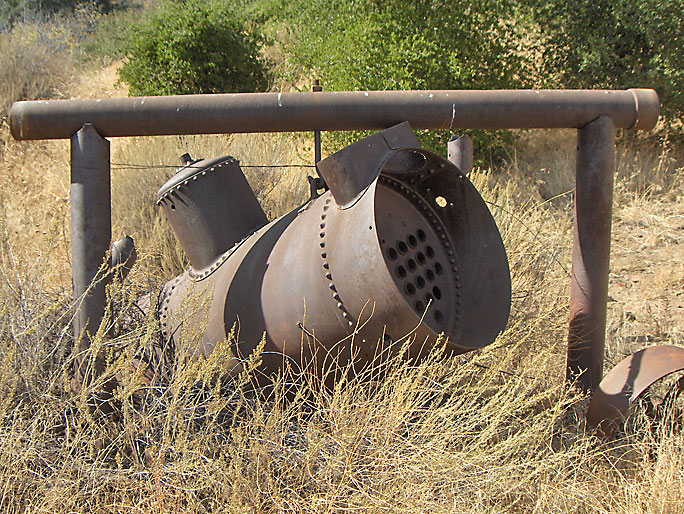
View of the boiler. It is about 10 feet long and 3 feet in diameter. The only other boiler in the Newhall Oil District is at Elsmere Canyon, making this an important artifact. However, the Elsmere boiler is larger and in better condition. This boiler was probably used to provide the steam for the 1899 Bradshaw and Beville well and possibly for the 1922 re-drilling by Occidental Petroleum. (11/21/2008)
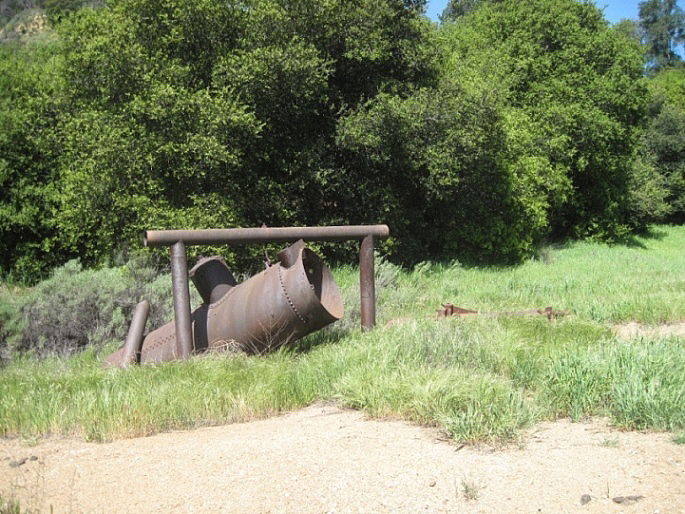
Here it is on 4/6/2019.

The boiler was held up by hooks on the pipe supports. (11/21/2008)
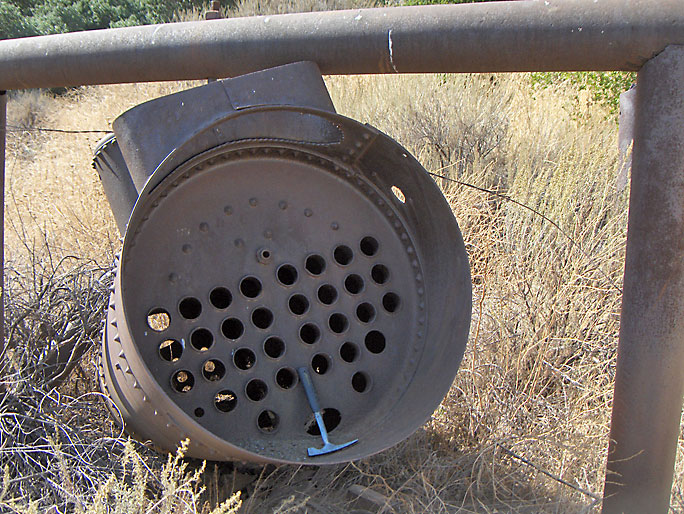
There are 32 holes for the missing pipes. The Elsmere boiler has 42 holes with the pipes. (11/21/2008)

This is what is left of the drilling engine. The 1998 picture (see oil page) shows the the engine was more-or-less complete. However, today it is obvious that the engine has been taken apart and partially stripped. The large wheel in the foreground is the flywheel of the engine. I was told by an MRCA ranger that someone attempted to steal a "ring" from Rice Canyon but was caught. This is probably that ring. If you ever see anybody removing anything from any of the canyons, report it to the rangers or even the police. Since there are no visible markings on the engine, it's hard to date it. It could have been used for drilling the 1899 well or for drilling the 1922 well or both. (11/21/2008)
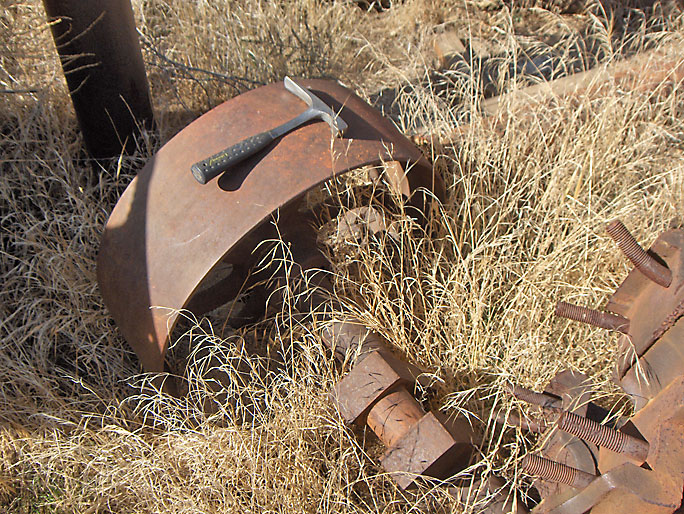
This is the crankshaft and pulley of the engine. The pulley would power a belt to the band wheel. (11/21/2008)
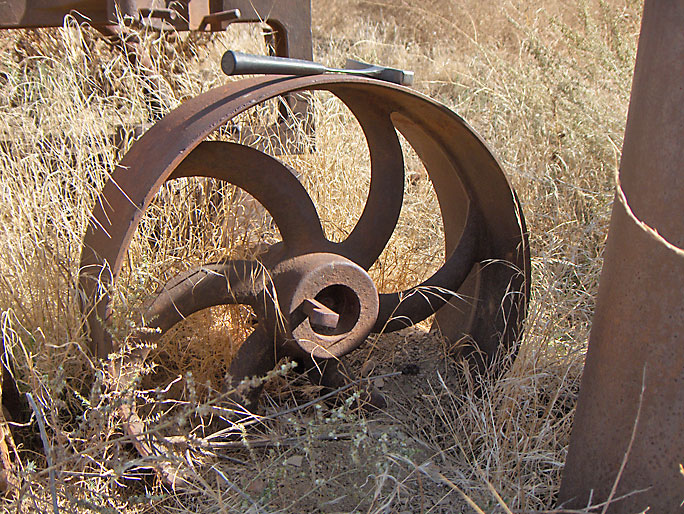
The opposite end of the pulley. (11/21/2008)
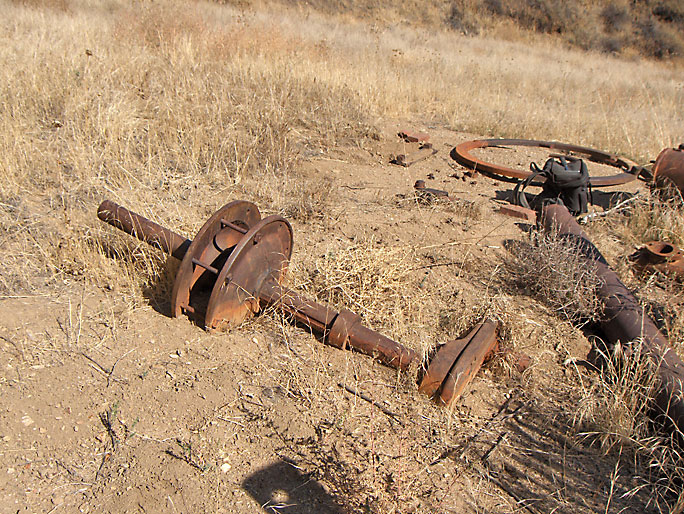
Here is a band wheel shaft, probably only used for the 1922 well. There are flanges on the left and a crank on the right. As the crank rotates, an arm (called a pitman) attached to the crank by a wrist pin, is pulled up and down. The pitman is attached to a stirrup which is attached to the walking beam. This pulls the walking beam up and down. On the other end of the walking beam is the drilling string. The drilling string is dropped over and over into the hole. The bit at the end of the string pulvered the rock at the bottom of the drill hole. (11/21/2008)
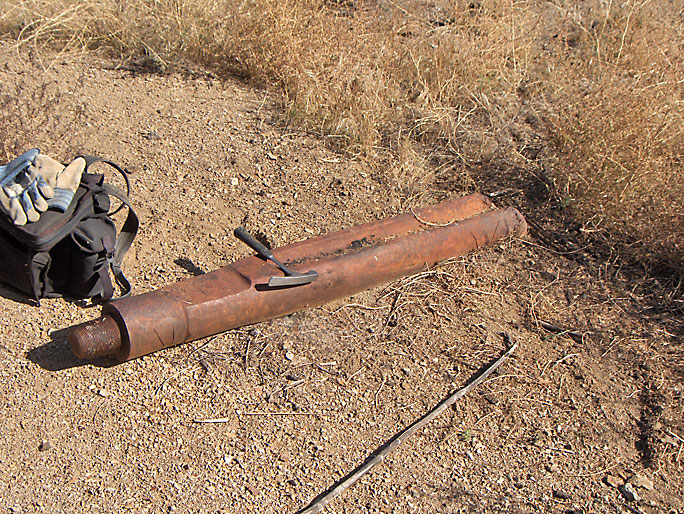
This is a cable-tool bit. It is what pulverizes the rock at the bottom of the hole. It is 5 feet long and is very heavy. The only other cable-tool bit in the Newhall Oil District is at Pico Canyon so this is also a rare and important artifact. (11/21/2008)

Here it is on 4/6/2019.
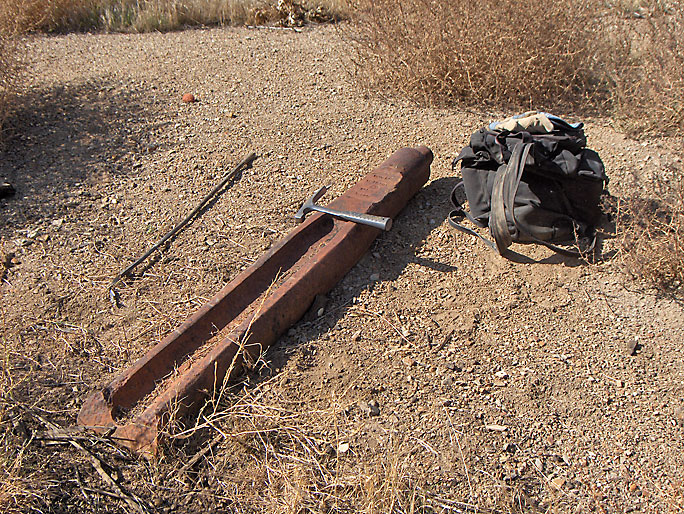
Another view of the bit. (11/21/2008)
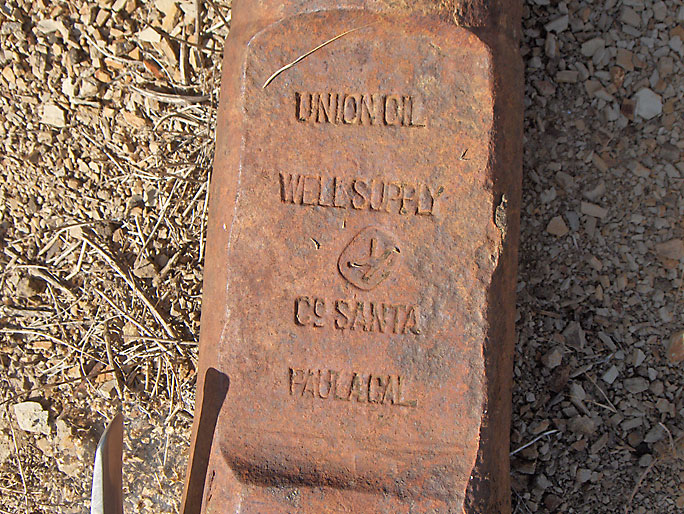
This bit was made by the Union Oil Well Supply Co, Santa Paula, Cal. (11/21/2008)

This is a sand reel and is the only one found in the Newhall Oil District making it very unique and important. Its old age is evident since the tree is partially growing over it. The shaft is 8 feet long. The sand reel consists of a drum (on the left) holding the wound up sand line that carries the sand pump, or bailer, in and out of the hole. It is turned by means of a friction pulley (on the right) pressed against the band wheel by using a lever. The bailer removes all the pulverized rock at the bottom of the well hole. This was more than likely only used at the 1922 Occidental Petroleum well and not at the 1899 Bradshaw and Beville well. The all steel sand reels began to be popular after 1900. (11/21/2008)

Here it is on 4/6/2019.
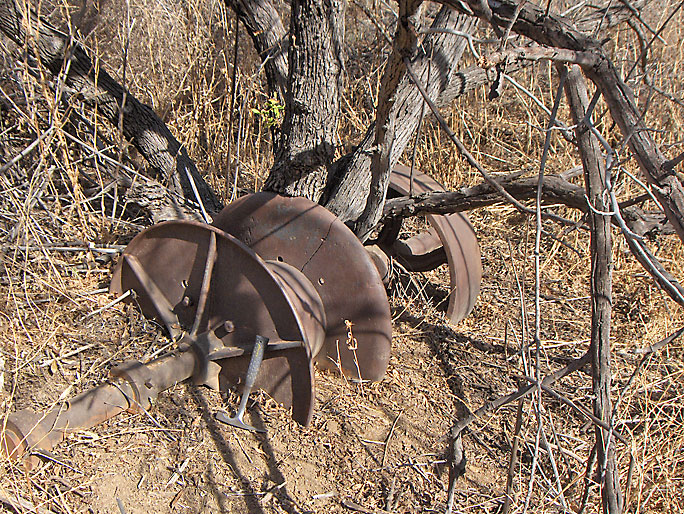
Another view of the sand reel. (11/21/2008)
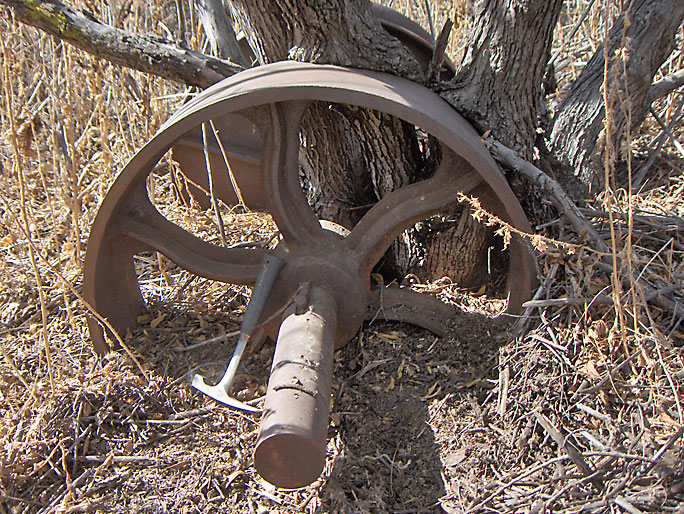
A view of the end showing the 2 1/2 foot diameter friction pulley. (11/21/2008)
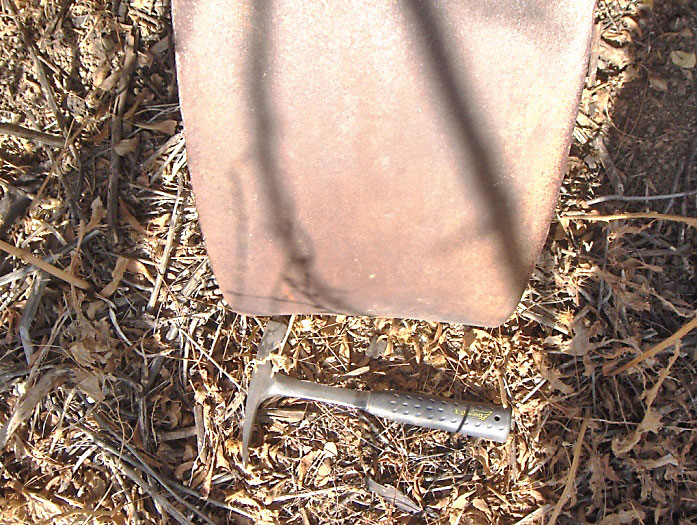
Looking down on the friction pulley. (11/21/2008)
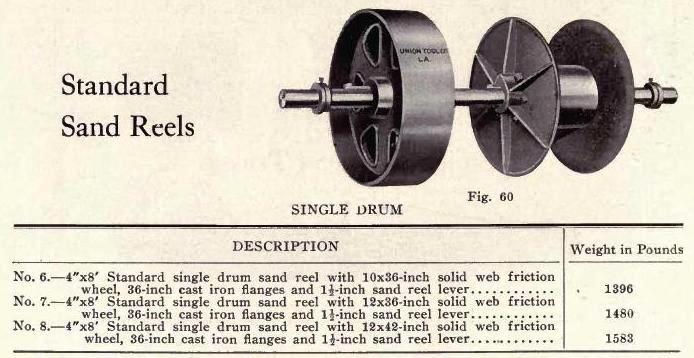
Sand reel from the 1914 Fairbanks Morse Oil Well Supply Catalog
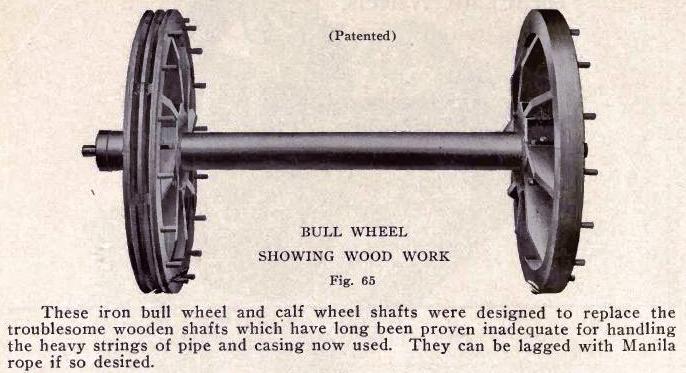
Bull wheel from the 1914 Fairbanks Morse Oil Well Supply Catalog. The sand reel in East Canyon was mistakenly called a bull wheel by the DOG in their 1999 annual. Here is what a bull wheel looks like. The bull wheel holds the drilling line.

There is also evidence of a wooden oil tank at this site. These are tank hoops. (11/21/2008)























